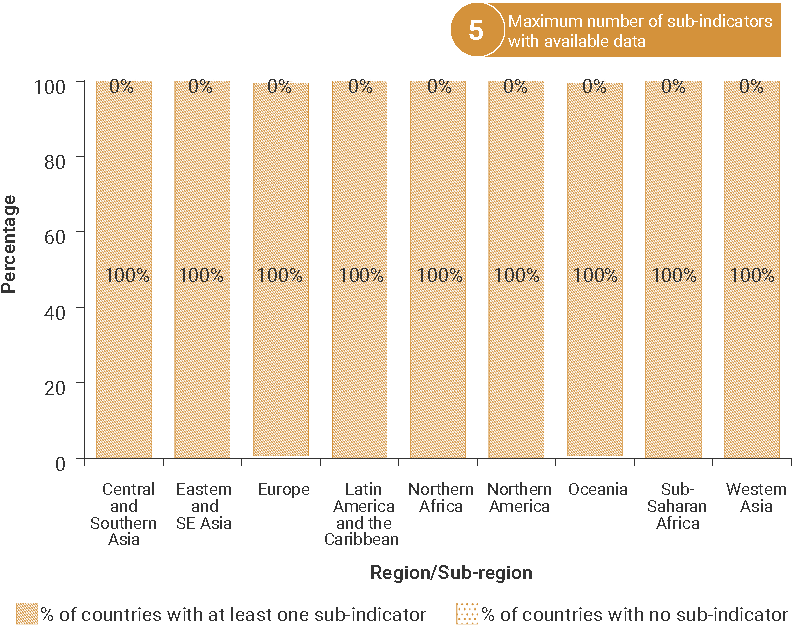SDG Indicator 15.2.1: Progress towards sustainable forest management
1. Key features and metadata
Definition: This indicator measures progress towards Sustainable Forest Management (SFM) through five sub-indicators.
| Sub-indicator | Disaggregated by |
|---|---|
|
AG_LND_FRSTCHG Annual forest area change rate (%) |
No current data disaggregation available.
|
|
AG_LND_FRSTBIOPHA Above-ground biomass in forest (tonnes per hectare) |
|
|
AG_LND_FRSTPRCT Proportion of forest area within legally established protected areas (%) |
|
|
AG_LND_FRSTMGT Proportion of forest area with a long-term management plan (%) |
|
|
AG_LND_FRSTCERT Forest area certified under an independently verified certification scheme (thousands of hectares) |
Sources of information: Data is collected by the Food and Agriculture Organization of the United Nations (FAO) through the Global Forest Resources Assessment (FRA). National sources of information include Ministries in charge of forests or other relevant Agencies. Certification bodies (e.g. Forest Stewardship Council (FSC) and the Programme for the Endorsement of Forest Certification (PEFC) also provide data on forest certification.
Related SDG Indicators: 15.1.1 (Forest area as a proportion of total land area).
2. Data availability by region, SDG Global Database, as of 02 July 2025

3. Proposed disaggregation, links to policymaking and its impact
| Proposed disaggregation | Link to policymaking | Impact |
|---|---|---|
|
Extent of protected forest by climatic domain (thousands of hectares)(FAO 2020):
|
This measure of the net change in protected forest by main climatic domain is particularly useful for highlighting regions and countries with a high percentage loss. It also shows trends of forest loss that are narrowing or widening (by category of forest), with a view to adapting policy development, appropriate regulatory frameworks and planning as well as investment requirements accordingly within the context of sustainable development (FAO 2020). |
Protected areas have a demonstrable impact on reducing deforestation, which could prompt national and local authorities to invest in forest protection (FAO 2022b). Especially given the role of forests in relation to biodiversity (as the most biologically diverse ecosystems on land – home to significant terrestrial species of animals, plants and insects) and benefits to humans (providing shelter, jobs and security for forest-dependent communities) (UN-ECOSOC 2017). |

